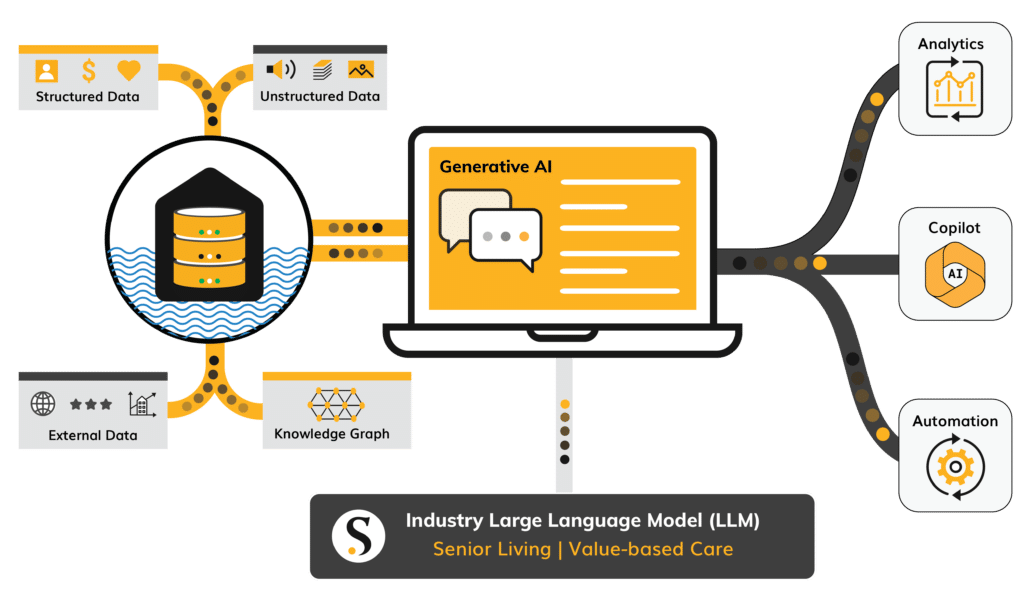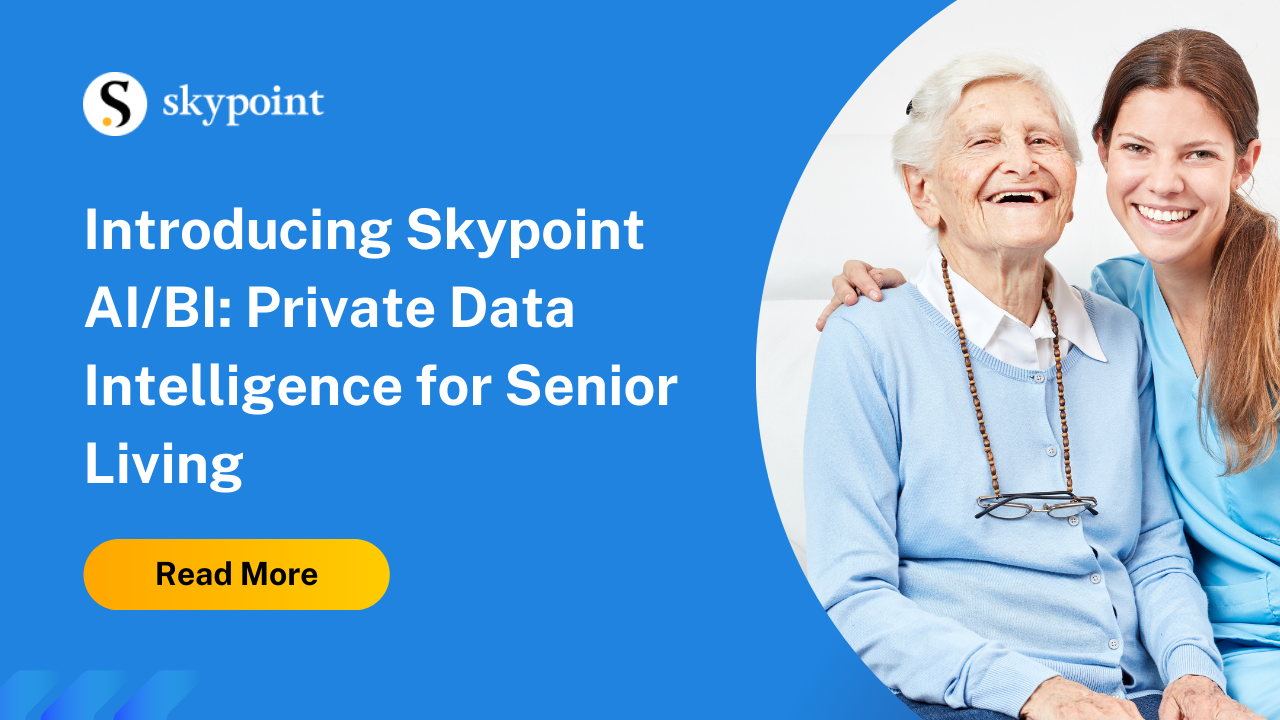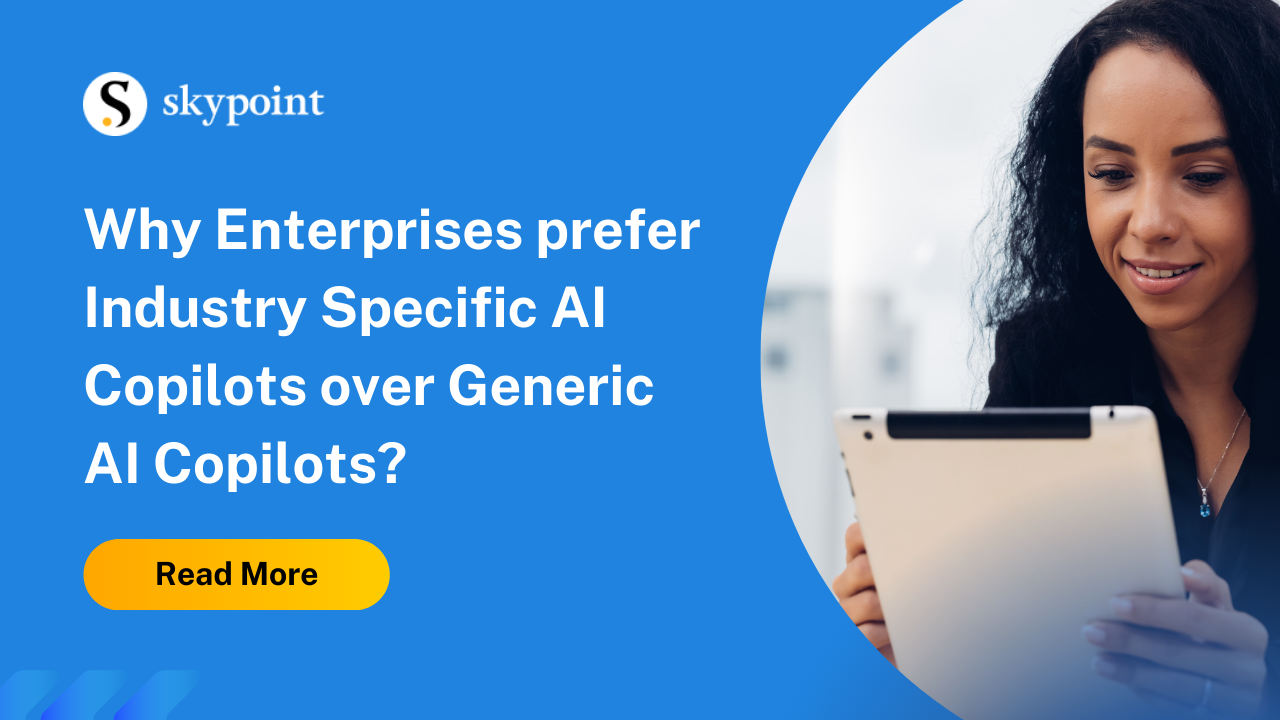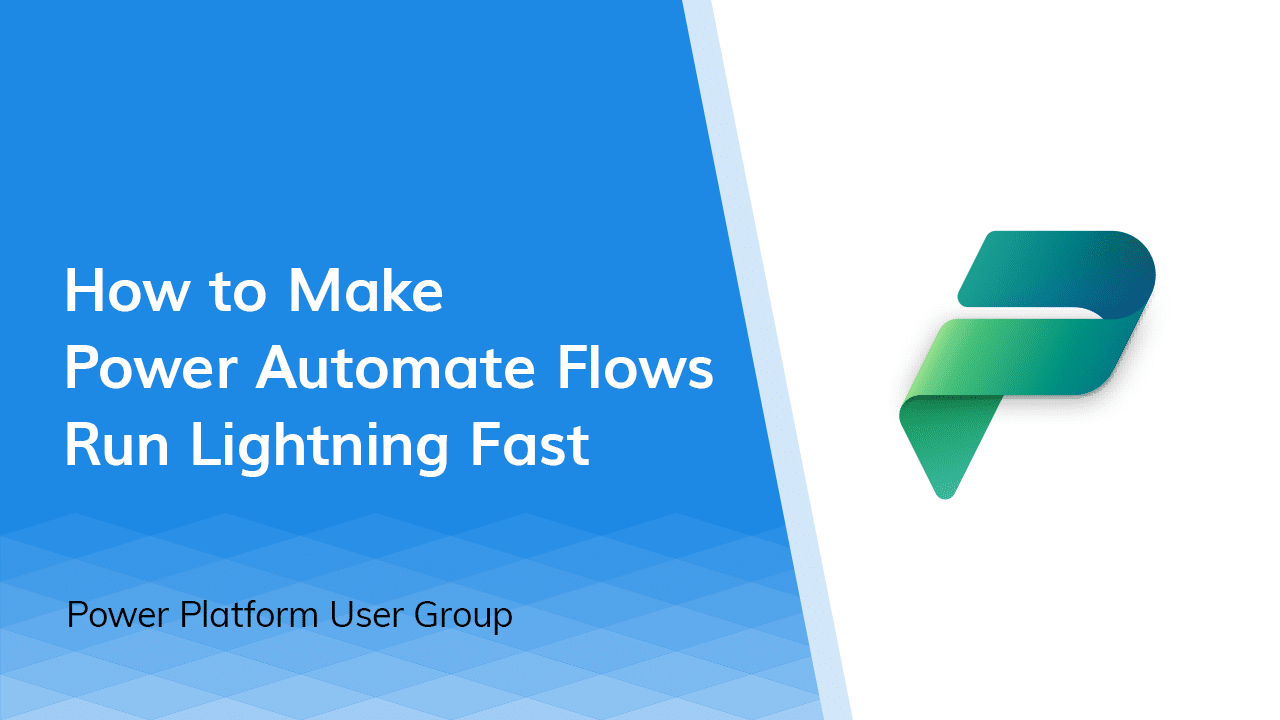AI is the bright shiny object that every organization wants. But if you’re an organization wondering where to start, you must crawl before you can run. Data unification in a Data Lakehouse is the crawl stage most organizations need to consider first to successfully embrace AI.
The senior living industry has so many diverse data types, from electronic health records (EHR) and resident management systems like Yardi and WelcomeHome, to SharePoint documents, audio recordings, videos, PDFs of policies and procedures, and state regulations. This data is not just structured but also unstructured, requiring a more sophisticated approach to integration and management.
What is a Data warehouse?
For most organizations, we often suggest a data warehouse as the first step on the AI journey. It’s important to understand what a data warehouse is and why it’s so critical for senior living organizations to get started with AI.
A data warehouse is essentially a centralized repository where data from various sources is stored, organized, and managed. Think of it as a giant digital filing cabinet. Just like in a warehouse where physical goods are stored and cataloged for easy retrieval, a data warehouse stores and organizes data in a structured way. This structured data can include anything from customer information and financial records to sales figures and inventory levels.
What is Unstructured Data?
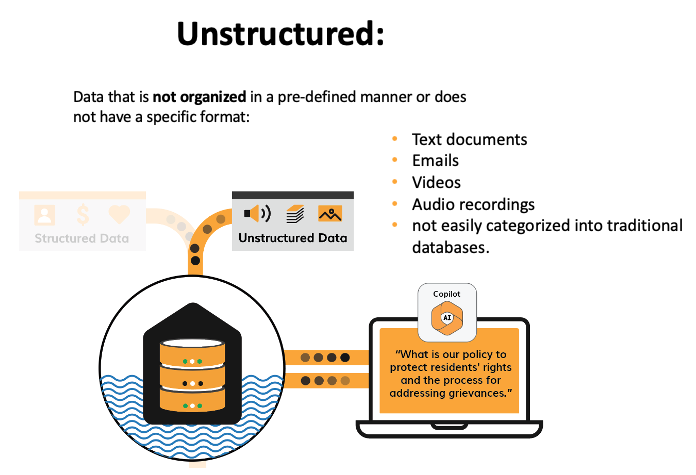
Unstructured data is information that doesn’t fit neatly into the traditional rows and columns of a database. Unlike structured data (think your Yardi & Sherpa data), which is highly organized and easily searchable, unstructured data is more freeform. Examples of unstructured data include:
- Text Documents: Policies, procedures, and state regulations in PDF or Word formats.
- Media Files: Audio recordings, videos, and images.
- Emails and Messages: Communications from various platforms.
- Sensor Data: Information from smart devices and IoT sensors – fall detection devices.
- Social Media Content: Posts, comments, and other user-generated content.
Why Traditional Data Warehouses Can’t Handle Unstructured Data Effectively
Traditional data warehouses are designed to handle structured data—data that is organized and formatted in a way that makes it easy to search and analyze. They work well for structured data for the following reasons:
- Schema Dependency: Traditional data warehouses rely on predefined schemas to organize data. This means the structure of the data must be known in advance, which works fine for structured data but not for the unpredictable nature of unstructured data.
- Storage Limitations: Unstructured data can be vast and varied, requiring flexible storage solutions. Traditional data warehouses often lack the capacity to efficiently store and manage large volumes of diverse data types.
- Complex Processing: Analyzing unstructured data requires sophisticated processing capabilities, including natural language processing (NLP) for text analysis, image recognition for visual data, and advanced algorithms for audio and video. Traditional warehouses are not equipped with the necessary tools and technologies to perform these tasks.
The Evolution from Data Warehouse to Data Lakehouse
The traditional data warehouses of the past are not enough to handle the complexity and variety of data in senior living. Enter the modern data warehouse, known as a Data Lakehouse. Unlike traditional data warehouses that only manage structured data, a Data Lakehouse can handle both structured and unstructured data, making it the ideal solution for senior living facilities.
At Skypoint, we recommend Azure for its robust capabilities and seamless integration but can integrate with any existing cloud platforms like Snowflake, AWS, or Google Cloud.
Azure’s Data Lakehouse offers a scalable, secure, and versatile platform for unifying data. Whether it’s EHR systems, property management software, or multimedia files, Azure can ingest, store, and process this data efficiently.
The First Step: Unifying Your Data
For many senior living facilities, the AI journey begins with unifying their diverse data sources into a Data Lakehouse. This foundational step is crucial for several reasons:
- Centralizing Your Data: By bringing all data into a single repository, facilities can manage and access their data more efficiently.
- Organizing & Cleaning Your Data: Once the data is centralized, the next step is to organize and clean it. This process involves removing duplicates, correcting errors, and ensuring consistency across datasets. Think of it as tidying up a warehouse to ensure that all items are correctly labeled and in their rightful place.
- Labeling and Structuring Data: Properly labeling and structuring data is essential for making it usable for AI applications. This step transforms raw data into a format that AI algorithms can easily process and analyze. This ensures that every data points is barcoded and categorized, ready for efficient retrieval and use. You can learn more about the details of this process here.
Senior living facilities often use several systems, including: Yardi, WelcomeHome, Sage, Oracle, ADP and Sherpa, just to name a few. We integrate all of them. See our list of integrations.
Because these systems frequently report data differently, operators often spend several hours a week generating reports from each system, often encountering discrepancies.
We recently worked with a senior living organization to integrate data from 4 different vendors into dashboards, saving them several hours a week, and even rectified reporting discrepancies that was causing them to overpay certain incentives. It’s all possible when your data is unified.
Top Questions from Senior Living Operators about AI
If you’re a senior living operator reading this blog, you might have several questions on your mind.
- Why should I consider a Data Lakehouse over a traditional data warehouse?
A Data Lakehouse can handle both structured and unstructured data, which is essential for integrating the diverse types of data typical in senior living facilities. This flexibility allows for more comprehensive data management and analysis.
- How does unifying our data help improve resident care?
By centralizing all your data, you gain a complete view of each resident’s needs and history. This holistic view enables personalized care plans, early detection of health issues, and more informed decision-making.
- What are the steps involved to clean and organize our data?
The process involves identifying and removing duplicate entries, correcting inaccuracies, standardizing data formats, and labeling data appropriately. This ensures that your data is accurate, consistent, and ready for AI analysis. You can read more about How to Get Your Data AI Ready.
- How secure is our data in a Data Lakehouse?
Azure provides robust security measures, including encryption, access controls, and compliance with industry standards, ensuring your data is protected. More about security
- What kind of AI applications can we develop once our data is unified?
With a unified data foundation, you can develop AI applications for predictive analytics, operational efficiency, personalized resident care, compliance monitoring, and more. See all AI use cases for Senior Living.
Preparing for AI: The Benefits of a Data Lakehouse
Data Unification in a Data Lakehouse enables senior living facilities to lay the groundwork for advanced AI and BI (Business Intelligence) applications. Here are some of the key benefits:
– Enhanced Decision-Making: With all data in one place, facilities can leverage AI to gain deeper insights into resident care, operational efficiency, and compliance.
– Improved Resident Experience: AI personalizes care plans, predict health issues, and streamline administrative tasks, enhancing the overall resident experience.
– Operational Efficiency: Automating routine tasks and improving data accuracy significantly reduces administrative burdens, allowing staff to focus more on direct resident care.
– Seamless Reporting: By unifying various systems, discrepancies in reports are minimized, and generating comprehensive reports becomes quicker and more accurate.
Conclusion: The AI Journey Starts Here
For senior living facilities unsure of where to start their AI journey, the answer is data unification in a data lakehouse . Skypoint advises all its senior living clients to begin their AI journey with data unification. This foundational step not only simplifies data management but also unlocks the potential of AI, paving the way for a smarter, more efficient future in senior living. By organizing, cleaning, and labeling this data, you can prepare it for AI and BI applications that can transform your operations and alleviate the burden on caregivers so they can spend less time entering data and more time providing personal care.
Reach out to schedule a personalized demo of the platform and how we unify your data sources.


